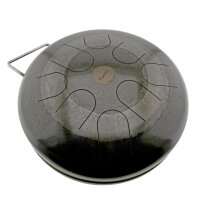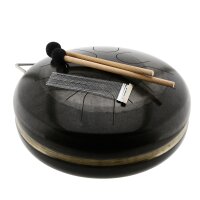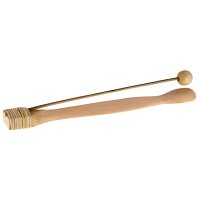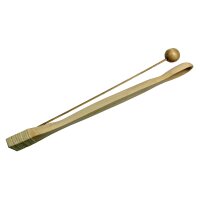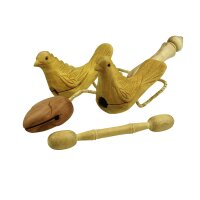Tonal Percussion
Under "tonal percussion", we have grouped together all percussion instruments which can be used to create different pitches. The best-known instruments in this group are the xylophones, which are available from DAN MOI in a variety of different versions, e.g. the Vietnamese bamboo xylophone, the T'rung, the rollophone for children and the polytonal sound animals. One percussion instrument that allows pitch modulation while playing is the West African talking drum. In this category, you will also find the Afro-Brazilian Agogó bell.
The T'rung bamboo xylophone was originally played in the central highlands (Tây Nguyên) of Vietnam. There, the sound of the instrument represents the minorities which live in this region of Vietnam. In Vietnam, the T'rung is available in a variety of sizes: large instruments tower over the musicians by a head or more. These instruments are played standing up. The special feature that sets them apart from other xylophones is that the tonewoods are arranged vertically. The tubes are loosely connected together by cords and mounted on a fixed stand. The deep, long tubes are positioned at the lower end of this "sound tree", the high, short bamboo tubes are fixed at the top. In Vietnam, the T'rung is played solo and in ensembles. This national variant of the T'rung is only about 60 years old. It is the only Vietnamese musical instrument that is tuned chromatically. At DAN MOI, you will find a small variant of the T'rung. The sound tubes are made from bamboo and are activated by striking with two small wooden strikers.
The "talking drum" is played in the countries of West Africa, such as Ghana and Gambia. The musician holds the drum, which is shaped like an hour glass, under his or her arm or hangs it over the shoulder by a strap. This leaves both hands free for playing. The bent stick is held in one hand and used to strike the drumskin. The other hand rests on the drumskin and the fingers are used to exert pressure. The fingers move to and fro and up and down on the drumskin. In addition, the elbow is used to change the tension of the drum cords. Now if the drum is struck, different pitches can be heard. In the countries of West Africa, people from some ethnic groups encode speech with the "talking drum" (e.g. the Yoruba). This enables them to use the drum to send messages. But in the meantime the "talking drum" has also become a popular instrument for World Music.
The Agogô bell is also associated with West Africa, specifically with the Yoruba from Nigeria. Two or three metal bells are connected together by a crosspiece. They are played with a striker, in other words, there is no clapper inside them. This metal bell has migrated from the West of Africa to South America and today plays a key role as a percussion instrument in the Samba and Capoeira. But the Agogó also serves many other popular types of music as a distinctive signal and rhythm instrument.
